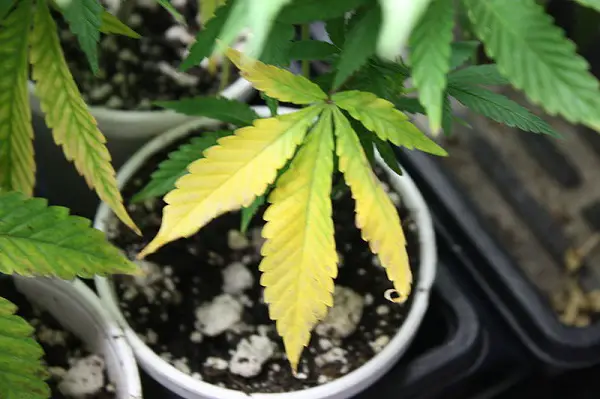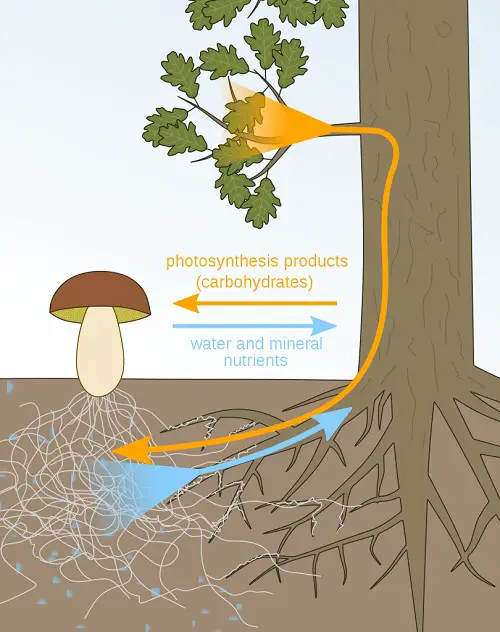Plant Nutrients and the Soil
In contrast to animals which require a complex diet of organic (carbon-containing) food, plants survive solely on CO2 and inorganic substances because they are autotrophs. The ability of plants to assimilate CO2 from the air, extract water and inorganic ions from the soil, and synthesize organic compounds is important not only to the survival of plants but also to animals and us people who rely on them for food.
Essential Plant Elements
A nutrient is considered an essential element if a plant must obtain it from its environment to be able to complete its life cycle. In hydroponics, plants are grown without soil and instead bathe the roots in mineral solutions. As such, a researcher is able to determine if an element is an essential element for a plant through this culture method.
Nine essential plant elements are macronutrients because they are required by the plant in large amounts. Elements required in smaller quantities are the plants’ micronutrients. Several micronutrients act as cofactors that cooperate with enzymes in catalyzing reactions. The following is the summary of the essential elements in plants:
| Macronutrients | Micronutrients |
| Carbon | Molybdenum |
| Oxygen | Iron |
| Hydrogen | Manganese |
| Nitrogen | Boron |
| Potassium | Zinc |
| Calcium | Copper |
| Magnesium | Chlorine |
| Phosphorus | Nickel |
| Sulfur | Sodium* |
Let’s highlight the roles of some of the essential elements:
- Nitrogen is a component of nucleic acids, proteins, and chlorophyll.
- Potassium helps regulate the opening and closing of the stomata.
- Calcium is important in forming the cell walls and maintaining cell membranes.
- Magnesium is a component of chlorophyll.
- Phosphorus is part of nucleic acids, phospholipids, and ATP.
- Sulfur is a component of proteins.
- Iron is a component of proteins in the electron transport chain.
The quality of soil, therefore, affects the growth and nutrition of plants.

Mutualistic Relationships Involving Plants
1. Plants and Soil Bacteria
Nitrogen is often the most common nutritional problem in plants since the soil is often deficient in nitrogen compounds that plants can use. Signs of nitrogen deficiency include stunted growth and yellow-green leaves, starting at the tips of older leaves. Other nutrients that are commonly deficient in plants include phosphorus and potassium. As such, when a nutrient deficiency is diagnosed, treating it is usually simple, say, using fertilizers to promote the plant’s growth.
Within the soil, bacteria facilitate the production of ammonium and nitrate from atmospheric nitrogen (N2) or from organic matter. Certain soil bacteria convert atmospheric N2 to ammonia in a process called nitrogen fixation. These bacteria are called nitrogen-fixing bacteria and a second group, known as ammonifying bacteria, adds ammonium to the soil by decomposing organic matter.
Plant roots can then absorb the nitrogen as ammonium. However, plants acquire their nitrogen mostly in the form of nitrate (NO3–). The third group of bacteria, known as nitrifying bacteria, convert ammonium into nitrates. After the nitrate is absorbed by the roots, enzymes in the plant cells convert the nitrate back to ammonium, which is then incorporated into amino acids.
Without these three types of bacteria, our crop plants will not be able to obtain enough nitrogen. In fact, mutualistic relationships provide more usable nitrogen to plants than industrial fertilizers can.
2. Plants and Fungi
Apart from bacteria, plant roots can also form mutualistic relationships with fungi. The mutualistic association is called a mycorrhiza. The fungus benefits from the supply of sugar by the host plant while the fungus provides more surface area available for water uptake and other minerals from the soil for the plant. However, roots can only be transformed into mycorrhizae if the appropriate fungus species is associated.

There are also other adaptations for plants that allow them to take advantage of other organisms. Epiphytes, such as staghorn ferns and many orchids, anchor themselves to a branch or tree trunk and produce their own food and absorb water and minerals from rain.
There are also parasitic plants such as the dodder, mistletoe, and even rafflesia, which cannot photosynthesize on their own but obtain organic compounds from their host. Few plants are carnivorous; examples would be the sundew plant and the Venus flytrap.
This topic pertained to the nutrition of plants and we have even introduced some concepts that allow plants to control these different mechanisms. Control mechanisms by plants are the topic that we will look at further next.
Next topic: Plant Hormones
Previous topic: Plant Nutrition and Transport
Return to the main article: Plant Form and Functions
Download Article in PDF Format
Test Yourself!
1. Practice Questions [PDF Download]
2. Answer Key [PDF Download]
Copyright Notice
All materials contained on this site are protected by the Republic of the Philippines copyright law and may not be reproduced, distributed, transmitted, displayed, published, or broadcast without the prior written permission of filipiknow.net or in the case of third party materials, the owner of that content. You may not alter or remove any trademark, copyright, or other notice from copies of the content. Be warned that we have already reported and helped terminate several websites and YouTube channels for blatantly stealing our content. If you wish to use filipiknow.net content for commercial purposes, such as for content syndication, etc., please contact us at legal(at)filipiknow(dot)net